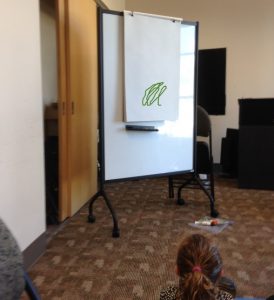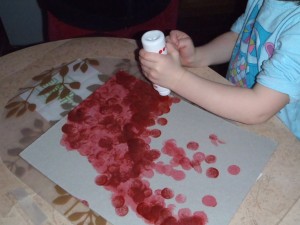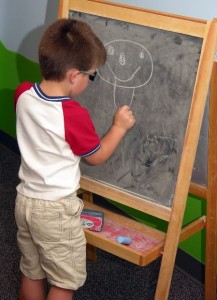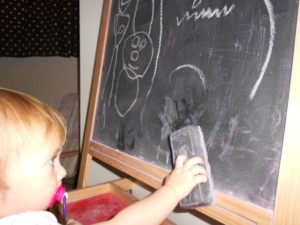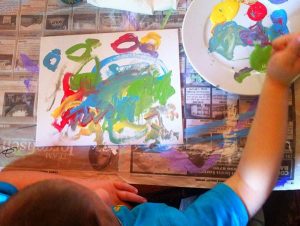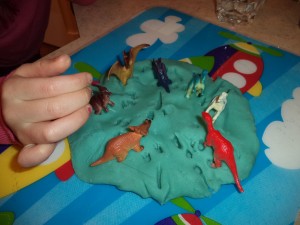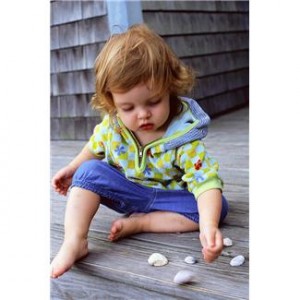Have there been any scribble messy play art attacks on the walls, floors, or furniture at your house? Scribble messy play took to the stage here recently. Lots of kids got up close and personal with scribbles, as well as some adults, at the annual Children’s Book Fest hosted in the city.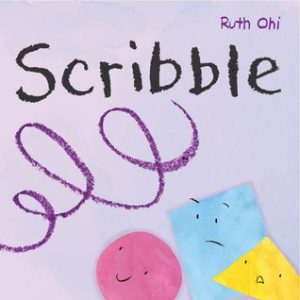
Many of us have ‘been there and done that’ when it comes to early scribbles. Children’s author, Ruth Ohi, has just written and published a book called Scribble. In the story, the regular shapes of Circle, Triangle, and Square meet scribble. At first, they are not sure what to make of Scribble, but together they create waves on the water, a string to hold tight to a balloon, and more.
At the event, children were able to see and hear authors in small sessions. Ruth Ohi invited kids to come up to her giant easel and scribble. She talked to them and helped them feel comfortable in front of the group, called out Go, mimed scribbling herself with great animation and excitement, and then Stop. She added to the scribbles and it became a unicorn dragon. She passed out papers and crayons to all of the kids and encouraged them to scribble. (in the photo above, we made the scribble lines darker in order to see them)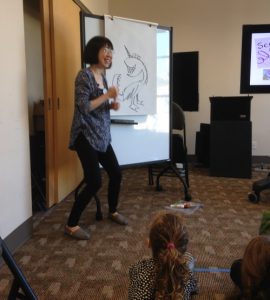
Seeing all the kids scribbling away reminded me of a blog post on the site Messy Monkeys, “learning to ‘dot dot dot’ and ‘scribble scribble scribble’ gives your child a head start in the muscle development required for when they (sob…) head off to school.” Just like children babble and coo when they are first learning to speak, they make random marks and scribble when they are first learning to write.
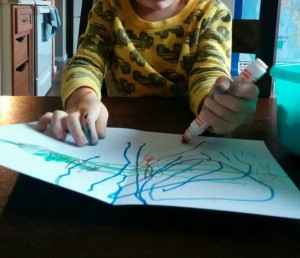
Scribbling can happen with crayons, pencils, chalk, paint, a stick, and more. As for options to paper—and the walls—they can scribble on sidewalks, driveways (watch for cars) and old sheets hung on a fence. Scribbles do not have to ‘be’ something. They might very well just be scribbles. As children scribble, they are not only learning about writing, they are experiencing the joy of creating and of expressing themselves in a form other than words. Could messy scribble play be part of your child’s day?

